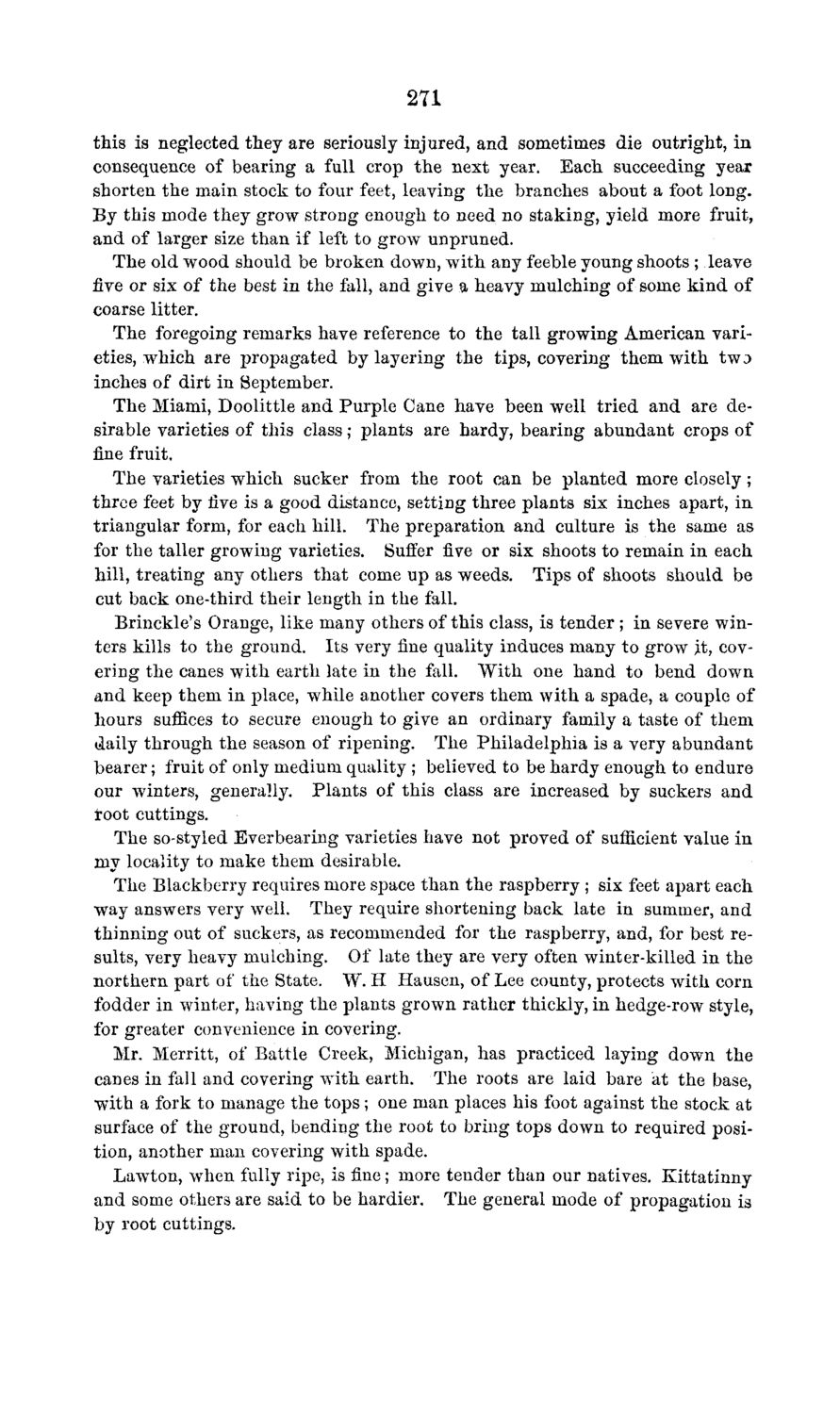| |
| |
Caption: Board of Trustees Minutes - 1869
This is a reduced-resolution page image for fast online browsing.

EXTRACTED TEXT FROM PAGE:
271 this is neglected they are seriously injured, and sometimes die outright, in consequence of bearing a full crop t h e next year. Each succeeding year shorten the main stock to four feet, leaving the branches about a foot long. By this mode they grow stroug enough to need no staking, yield more fruit, and of larger size than if left to grow unpruned. The old wood should be broken down, with any feeble young shoots ; leave five or six of the best in the fall, and give a heavy mulching of some k i n d of coarse litter. The foregoing remarks have reference to the tall growing American varieties, which are propagated by layering the tips, covering them with two inches of dirt in September. The Miami, Doolittle and Purple Cane have been well tried and are desirable varieties of this class; plants are hardy, bearing abundant crops of fine fruit. The varieties which sucker from the root can be planted more closely; three feet by five is a good distance, setting three plants six inches apart, in triangular form, for each hill. The preparation and culture is the same as for the taller growing varieties. Suffer five or six shoots to remain in each hill, treating any others t h a t come up as weeds. Tips of shoots should be cut back one-third their length in the fall. Brinckle's Orange, like many others of this class, is tender ; in severe winters kills to the ground. Its very fine quality induces many to grow it, covering the canes with earth late in the fall. W i t h one hand to bend down and keep them in place, while another covers them with a spade, a couple of hours suffices to secure enough to give an ordinary family a taste of them daily through the season of ripening. The Philadelphia is a very abundant bearer; fruit of only medium quality ; believed to be hardy enough to endure our winters, generally. Plants of this class are increased by suckers and toot cuttings. The so-styled Everbearing varieties have not proved of sufficient value in my locality to make them desirable. The Blackberry requires more space than the raspberry ; six feet apart each way answers very well. They require shortening back late in summer, and thinning out of suckers, as recommended for the raspberry, and, for best results, very heavy mulching. Of late they are very often winter-killed in the northern part of the State. W. H Hausen, of Lee county, protects with corn fodder in winter, having the plants grown rather thickly, in hedge-row style, for greater convenience in covering. Mr. Merritt, of Battle Creek, Michigan, has practiced laying down the canes in fall and covering with earth. The roots are laid bare at the base, with a fork to manage the t o p s ; one man places his foot against the stock at surface of the ground, bending the root to bring tops down to required position, another man covering with spade. Lawton, when fully ripe, is fine; more tender than our natives. Kittatinny and some others are said to be hardier. The general mode of propagation is by root cuttings.
| |